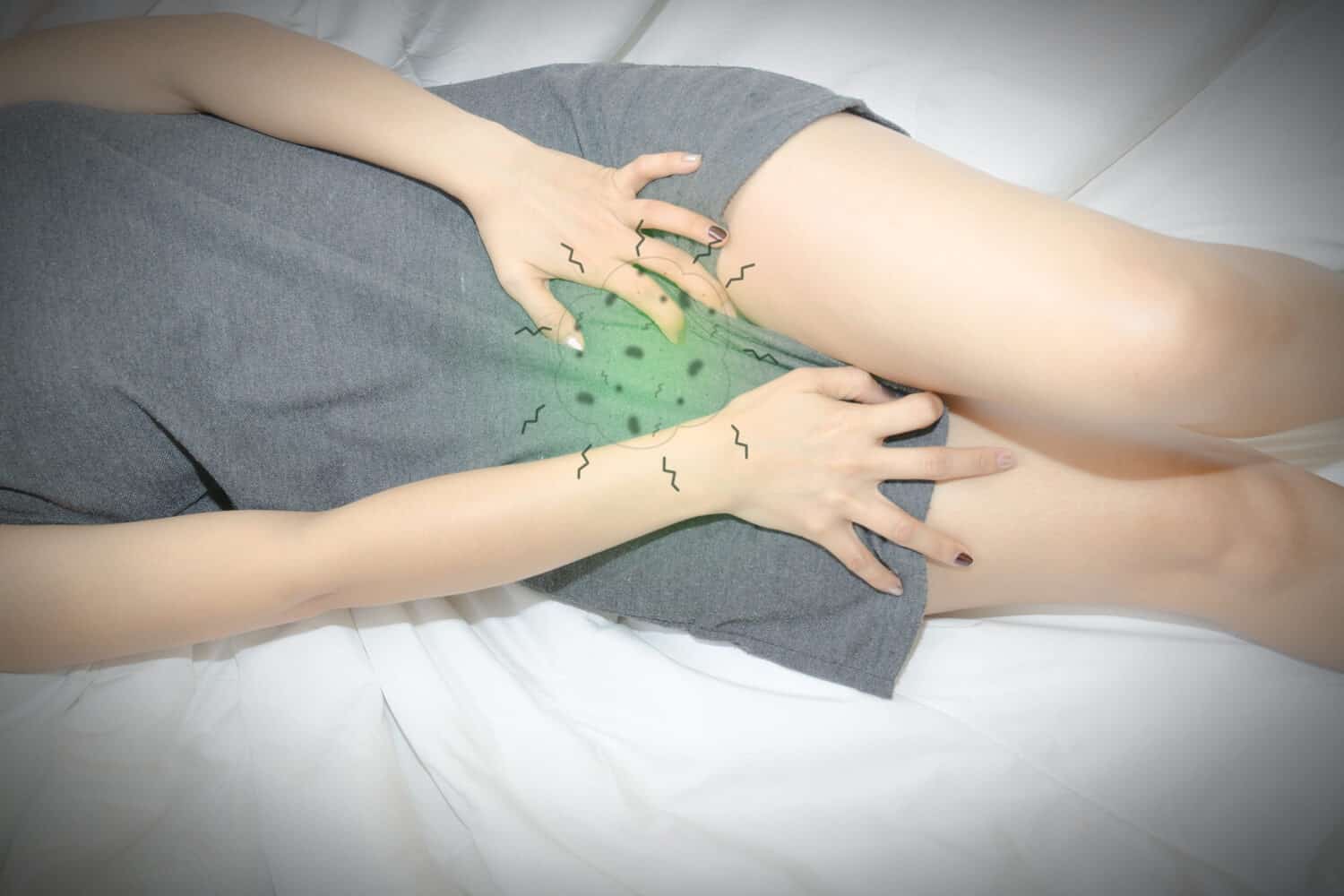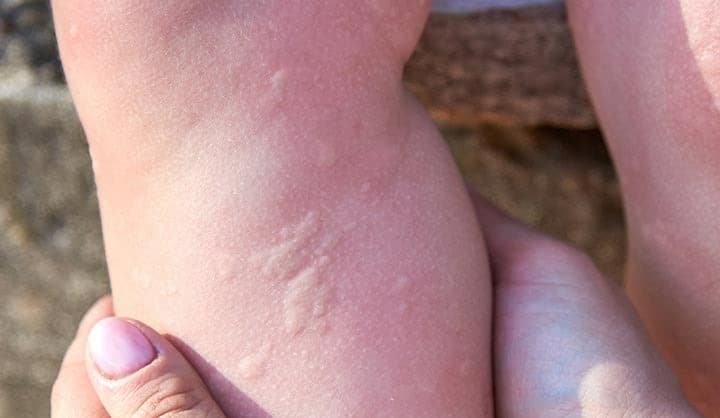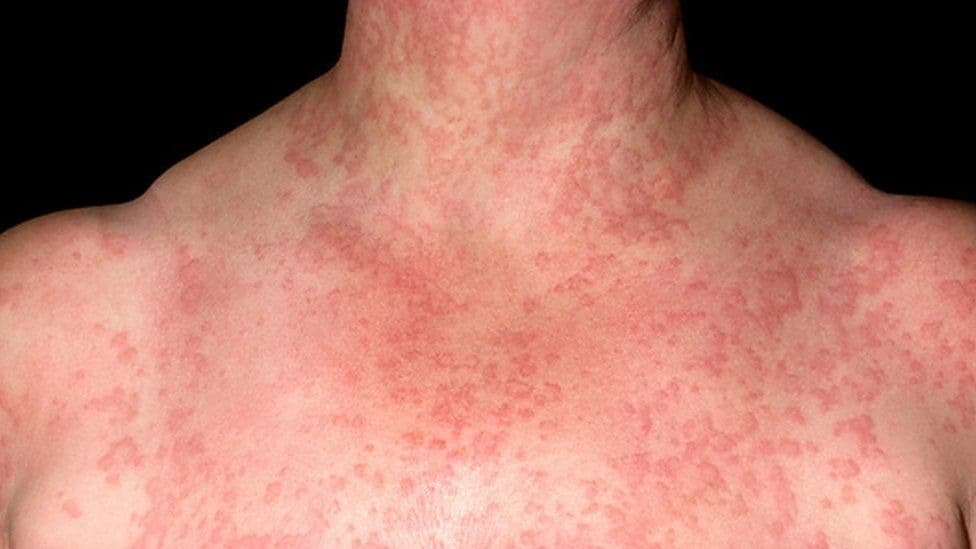Allergies are common, but what happens when the immune system reacts to truly extraordinary triggers? This article will delve into the intriguing realm of exceptionally rare allergies that have astonished medical professionals.
From peculiar fluid sensitivities to unusual environmental reactions, these cases challenge your perception of what can trigger an allergic response. Join us on this captivating journey as we uncover these incredibly rare allergies’ unique circumstances and symptoms.
6. Semen Allergy
Formal Name: Seminal plasma hypersensitivity
Symptoms: Skin discoloration, burning, and swelling where semen contacts the skin or vaginal tissues
Treatments: Antihistamine before sex

Semen allergy, also known as seminal plasma hypersensitivity, is a rare condition that affects a small percentage of women worldwide, ranging from 0.05% to 2%. When a woman is allergic to semen, her body’s immune system mistakenly identifies components of semen as harmful and triggers an allergic reaction.
Symptoms typically include skin discoloration, burning, and swelling in areas where semen comes into contact with the skin or vaginal tissues. To manage semen allergy, preventive measures such as using condoms or abstaining from sexual activity may be considered.
However, for couples who wish to conceive, there are alternative options available. One common treatment approach involves taking antihistamine medication before engaging in sexual intercourse to minimize allergic reactions.
Did You Know?
Semen allergies can occur in same-sex female couples as well. In such cases, the allergic reaction is triggered by proteins present in one partner’s vaginal fluids that the other partner’s immune system identifies as foreign.
5. Sesame Seeds Allergy
Formal Name: Sesamum indicum allergy
Symptoms: Itching, hives, swelling of the lips, tongue, or throat
Treatments: Epinephrine auto-injectors

Sesame seeds allergy, formally known as Sesamum indicum allergy, is a condition in which the immune system reacts adversely to proteins found in sesame seeds. It is estimated that approximately 0.1 percent of people in the United States are affected by this allergy. When individuals with sesame seeds allergy come into contact with sesame or consume products containing sesame, they may experience allergic reactions.
Common symptoms include itching, hives, and lips, tongue, or throat swelling. In more severe cases, anaphylaxis can occur, which is a severe and potentially life-threatening allergic reaction. It’s worth noting that sesame seeds are widely used in various cuisines, making it challenging for individuals with this allergy to avoid exposure.
Therefore, it is crucial for individuals with sesame seeds allergy to carefully read food labels, inform restaurants about their allergies, and carry epinephrine auto-injectors at all times.
Did You Know?
Sesame seeds are commonly used in various cuisines, including Asian, Middle Eastern, and Mediterranean.
4. Cold Temperatures Allergy
Formal Name: Cold-induced urticaria
Symptoms: Itchy hives, redness and swelling
Treatments: Nondrowsy antihistamines, loratadine, and desloratadine

Cold-induced urticaria, commonly known as a cold temperature allergy, is a rare form of physical urticaria, which is an allergic reaction triggered by physical stimuli. Exposure to cold temperatures causes the skin to break out in hives (urticaria) and various other symptoms in this particular condition.
When the skin is exposed to cold air, water, or objects, the immune system is activated, releasing histamines and other chemicals that lead to the development of hives on the affected skin areas. The symptoms of cold temperatures allergy typically include red, itchy hives or welts that appear on the skin after exposure to cold.
Swelling, a burning sensation, or a stinging feeling on the affected skin may accompany the hives. In severe cases, individuals may experience systemic symptoms like dizziness, difficulty breathing, or even anaphylaxis, a life-threatening allergic reaction.
Did You Know?
This allergy can happen quickly after exposure and is generally limited to the exposed parts of the body, such as hands, face, or legs.
3. Exercise Allergy
Formal Name: Exercise-Induced Anaphylaxis (EIA)
Symptoms: Pruritus, hives, flushing, wheezing, and GI involvement
Treatments: Epinephrine

Exercise-induced anaphylaxis (EIA) is a rare but potentially serious condition where physical activity triggers an allergic reaction in the body. It typically occurs when exercise is followed by exposure to a specific allergen, such as certain foods, medications, or environmental triggers.
The exact mechanism behind EIA is not fully understood, but it is believed that exercise-induced changes in the body’s temperature and blood flow may contribute to the allergic response.
Symptoms of EIA can vary in severity but often include skin reactions like hives and itching, difficulty breathing, abdominal pain, nausea, vomiting, and in severe cases, anaphylactic shock, which is a life-threatening allergic reaction that affects the whole body. EIA can affect individuals of any age and fitness level, and it’s essential to seek immediate medical attention if anaphylaxis is suspected.
Did You Know?
Long-term management may involve working closely with an allergist or immunologist to identify triggers and develop an appropriate action plan to prevent and manage future episodes of EIA.
2. Electricity Allergy
Formal Name: Electromagnetic Hypersensitivity (EHS)
Symptoms: Headache, fatigue, stress, sleep disturbances
Treatments: Reducing exposure to electromagnetic field sources, using shielding materials

Electromagnetic Hypersensitivity (EHS), also known as electricity allergy, is a controversial condition in which individuals report experiencing a range of symptoms when exposed to electromagnetic fields (EMFs) emitted by various electronic devices and technologies.
Though not widely recognized as a medical condition, some people claim to be sensitive to electromagnetic radiation, which they believe leads to various health issues. These electromagnetic fields can come from sources such as Wi-Fi routers, cell phones, power lines, and other electrical devices.
The symptoms reported by individuals who claim to have EHS can vary widely and may include headaches, fatigue, sleep disturbances, dizziness, skin rashes, tingling sensations, and difficulty concentrating. However, these symptoms are non-specific and can often be attributed to other medical conditions or simply stress and anxiety.
Did You Know?
The scientific community generally considers EHS a psychosomatic condition, meaning that the symptoms experienced are not caused directly by electromagnetic fields but rather by psychological or other environmental factors.
1. Water Allergy
Formal Name: Aquagenic urticaria
Symptoms: Itchiness, red hives, and swelling
Treatments: Petroleum-based cream, antihistamines, phototherapy

Water allergy is an unusual form of physical urticaria and is considered the rarest allergy worldwide. Unlike typical allergies triggered by substances like pollen or pet dander, this condition affecting 1 in every 23 million people worldwide, involves an allergic reaction to water on the skin. While the exact mechanism behind aquagenic urticaria is not fully understood, it is believed to involve the release of histamines when water comes into contact with the skin, leading to the formation of hives or welts.
The symptoms of aquagenic urticaria can be distressing and appear rapidly after exposure to water, regardless of its temperature. Within minutes, the affected skin may develop itching, redness, and hives, varying in severity from mild discomfort to more intense reactions.
Unfortunately, there is no definitive cure for aquagenic urticaria, and treatment primarily focuses on managing the symptoms. Antihistamine medications are commonly prescribed to reduce the histamine response and alleviate itching and hives.
Did You Know?
In localized cases, topical corticosteroid creams may be used to reduce inflammation.
